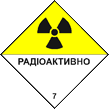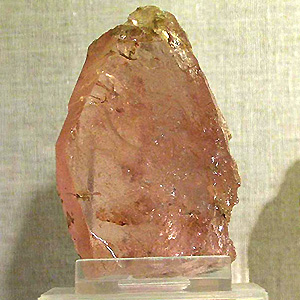Morgan (the Sparrow)
 Mineral characteristic.
Mineral characteristic.
Connoisseurs gems known that the emerald and aquamarine are varieties of beryl. There are other color options precious beryl. Tseziysoderzhaschie beryl pink, peach or purple-red color have been named in 1911 in honor of morganite J. Morgan (1837-1913.) - American banker and philanthropist, donated his collection of precious stones and minerals to the Museum of Natural History in New York. Beautiful delicate pink hue impurities give beryl manganese. For the first time morganite were discovered in California. Later, these minerals are found in Madagascar, Brazil, Africa, Afghanistan and on the territory of Russia. Large crystals are relatively rare, which makes them especially valuable varieties of beryl. Morganite not necessary to irradiate anything due to possible impurities cesium.
Pink beryl deep beautiful colors are found in Madagascar, Brazil (one of the threads with the jewelry vorobyevite up to 20 cm in development for a number of years), in the United States, Mozambique, Zimbabwe, Namibia, China and about. Elbe. Vorobyevite having no practical significance, found in the Urals. Painting vorobyevite - from pale to deep pink, sometimes with a yellowish or orange-red shade, which disappears when heated. Pink beryl in jewelry can be easily mistaken for Kuntz pink topaz, noble spinel, cubic zirconia. In the X-ray glow all vorobyevite dark red.
Beryls beautiful deep-red, zemlyanichno- and cherry red color found in 1905 in the field Topaz Mountain in pieces. Utah (USA). They are called by the name of M. bixbyite Bixby, cataloged pieces of minerals. Utah. Bixby (Bixby) raspberry-red color was found in pieces. New Mexico, USA. biksbiita crystals were in the form of thick hexagonal plates. Painting due admixture of manganese ions.
 Physical features morganite.
Physical features morganite.
This mineral containing radioactive components. From the point of view of physics of crystals, correct and safe in terms of the level of radiation (up to 19-24 mR / hour) are morganite beryl small and slightly stained - they painted small amount of radioactive cesium compounds, or contain it in small quantities.
If morganite intensely colored or have a large size, the probability is high that it causes an increased level of natural radiation morganite beryl (from 29-32 mR / h and above) - is strictly forbidden to keep their home collections, expose serial and industrial cutting (especially in home and industrial environments where a large number of personnel) works. They were strictly forbidden to irradiate and dignify in nuclear reactors and transported in large quantities (a total of 29-32 mR / h and above). Prohibited transport of radioactive stones without sign "radiation".
Is it safe to wear bright small morganite beryl, regardless of their form on the hands (in the rings and brasletah- "wristband") and on the legs - as far as possible from the thyroid gland, birthmarks, moles large (particularly convex) from the breast, superficial lymph nodes etc. easily the targeted object radiation on the human body. In any case, for safety and environmental reasons, it is not recommended to wear morganite constantly and keep in an apartment or the office of large samples of this mineral (the house and the apartment - not a mineralogical museum with acceptable levels of radiation from 32 to 120 mR / h and up to expositions and mineralogical special depositories ).
Dangerous is the direct contact with the body and worn on the body point and diffuse sources of radiation and radioactive components (about 50% of the radiation is absorbed by contact with the outer surface of the body and about 100% of the radiation - ingestion of radioactive or contaminated object).
The magical properties of stones.
It will be recalled that all stones are considered beryl, sharpens the mind, protects against fatigue and keep the good spirits of its owner. It is believed that they help in the fight against the enemies and lawsuits, as well as awaken extinct conjugal love. Morganite is particularly appreciated by connoisseurs of the mystical properties of minerals for the ability of these stones eliminates the effects of emotional trauma. His cheerful color morganite as it indicates to its owner on the pleasant side of life.


Toxic and hazardous radioactive rocks and minerals
** - Poisonous stones and minerals (obligatory check in chemical laboratory + clear indication of toxicity).
** - Radioactive rocks and minerals (obligatory check on a regular dosimeter + ban on the open sale of radioactivity in the event of more than 24 mR / hour + additional measures to protect the population).
All rare stones should always be checked on a regular dosimeter on the permissible level of radiation and a chemical laboratory in the absence of toxic and volatile components which are hazardous to humans and the environment.


Comments
Commenting, keep in mind that the content and the tone of your messages can hurt the feelings of real people, show respect and tolerance to his interlocutors, even if you do not share their opinion, your behavior in terms of freedom of speech and anonymity offered by the Internet, is changing not only virtual, but real world. All comments are hidden from the index, spam control.